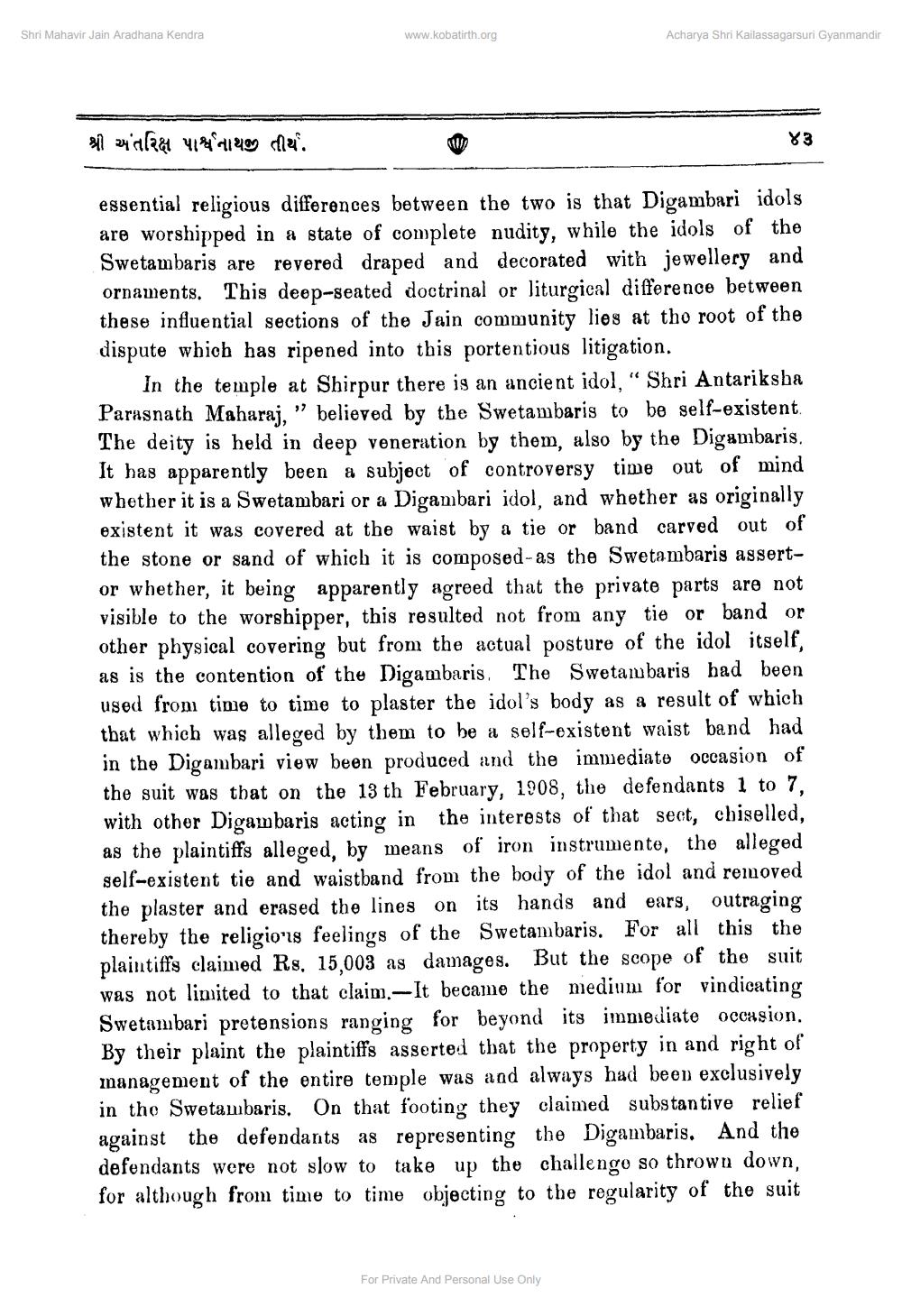________________
Shri Mahavir Jain Aradhana Kendra
www.kobatirth.org
Acharya Shri Kailassagarsuri Gyanmandir
શ્રી અંતરિક્ષ પાર્શ્વનાથજી તી
essential religious differences between the two is that Digambari idols are worshipped in a state of complete nudity, while the idols of the Swetambaris are revered draped and decorated with jewellery and ornaments. This deep-seated doctrinal or liturgical difference between these influential sections of the Jain community lies at the root of the dispute which has ripened into this portentious litigation.
For Private And Personal Use Only
૪૩
In the temple at Shirpur there is an ancient idol," Shri Antariksha Parasnath Maharaj," believed by the Swetambaris to be self-existent. The deity is held in deep veneration by them, also by the Digambaris. It has apparently been a subject of controversy time out of mind whether it is a Swetambari or a Digambari idol, and whether as originally existent it was covered at the waist by a tie or band carved out of the stone or sand of which it is composed-as the Swetambaris assertor whether, it being apparently agreed that the private parts are not visible to the worshipper, this resulted not from any tie or band or other physical covering but from the actual posture of the idol itself, as is the contention of the Digambaris. The Swetambaris had been used from time to time to plaster the idol's body as a result of which that which was alleged by them to be a self-existent waist band had in the Digambari view been produced and the immediate occasion of the suit was that on the 13 th February, 1908, the defendants 1 to 7, with other Digambaris acting in the interests of that sect, chiselled, as the plaintiffs alleged, by means of iron instrumente, the alleged self-existent tie and waistband from the body of the idol and removed the plaster and erased the lines on its hands and ears, outraging thereby the religions feelings of the Swetambaris. For all this the plaintiffs claimed Rs. 15,003 as damages. But the scope of the suit was not limited to that claim.-It became the medium for vindicating Swetambari pretensions ranging for beyond its immediate occasion. By their plaint the plaintiffs asserted that the property in and right of management of the entire temple was and always had been exclusively in the Swetambaris. On that footing they claimed substantive relief against the defendants as representing the Digambaris. And the defendants were not slow to take up the challenge so thrown down, for although from time to time objecting to the regularity of the suit




